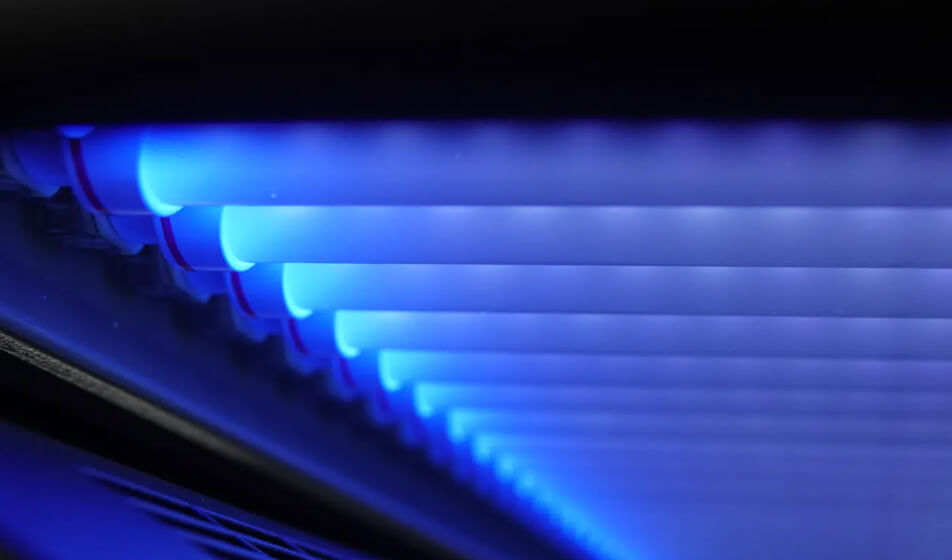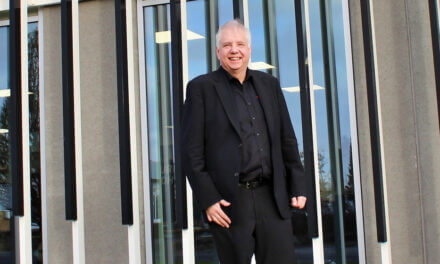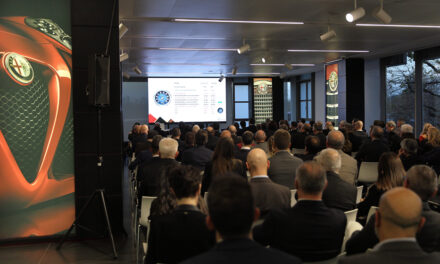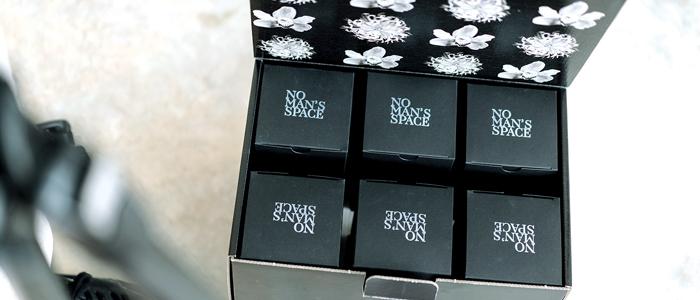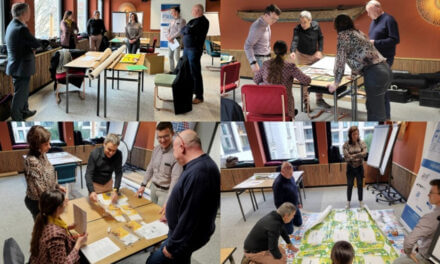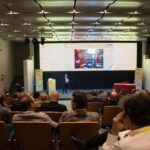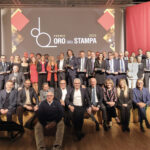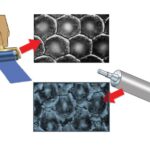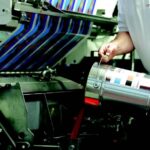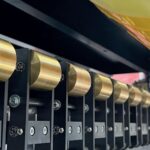Time is running out for fluorescent exposure frames. Fluorescent technology is caught in a pincer movement between an industry pursuing increased efficiency, greater sustainability and lower running costs on one hand, and a stream of global regulation designed to encourage, even mandate, a transition from fluorescent bulbs to more efficient, environmentally friendly LED lamps. This is why flexo printers and trade shops are also urgently reviewing their plate exposure technology.
Problems in the plate room
The key problem with fluorescent exposure technology is the way that bulbs degrade over time, and at different rates across and within individual tubes. This weakness causes a host of problems that cost users time and money, including:
- Inconsistent, unpredictable exposure that can result in inconsistent plates and unpredictable print results, leading to wasted time, plates and printing materials.
- Because fluorescent technology is more operator-dependent, plate room staff spend excessive time monitoring bulb performance, and calibrating and recalibrating exposure units.
- Waiting for fluorescent bulbs to warm up and cool down impacts productivity and plate throughput.
- Replacing fluorescent bulbs at regular intervals calls for time-consuming recalibration each time new tubes are replaced.
- Because the long-term supply of fluorescent bulbs is uncertain, users spend money stockpiling.
Problems for the environment
As if these problems alone weren’t sufficient to encourage the move to LED exposure technology, fluorescent bulbs pose significant problems for the wider environment, at a time when achieving and maintaining sustainable production is of crucial importance. These include:
- Fluorescent tubes contain mercury, a toxic heavy metal, and phosphor coatings, both of which must be disposed of properly in special recycling programs.
- Some fluorescent bulbs generate ozone, which can be harmful to health.
- Fluorescent tubes are less energy-efficient than LED lamps and have a considerably shorter lifespan, which work against sustainability.
Tightening regulation everywhere
The clearest signal that time is up for fluorescent light source technology is the tide of regulation that will eventually sweep fluorescent away. On a global scale, the Minimata Convention on Mercury, an international treaty aimed at reducing mercury emissions, has caused many countries to begin phasing fluorescent bulbs out. Among several measures in the European Union, the Restriction of Hazardous Substances Directive includes limits on mercury in lighting products, with the exemption for UV fluorescent expiring February 2027, and the Ecodesign Regulation bans the sale of compact and linear fluorescent bulbs. The US Department of Energy has introduced stricter efficiency standards that effectively phase out less energy efficient lighting. Canada, Japan and China are all encouraging LED adoption through a variety of subsidies and other incentives.
The benefits of LED
LED exposure technology has many advantages compared to fluorescent. Among the most significant benefits are:
- Stable, uniform light source that does not degrade significantly over time
- Instant ‘on / off’ characteristics
- More energy efficient in achieving comparable light intensity
One path into LED technology – a new exposure system
If LED has so many advantages, and fluorescent technology is ripe for replacement, it might seem remarkable that some flexo plate rooms haven’t yet made the switch to LED. But there are reasons, because the traditional route — investing in a new LED exposure solution — has significant drawbacks and complications.
The first is cost, as the capital outlay for a new LED exposure solution is anything but minimal. And besides, there’s the question of finding extra space for an additional exposure system and training operators in new practices.
There is also greater operational complexity. Most new LED exposure solutions utilize high power, scanning LED light sources that use a ‘burst exposure’ process – executed in repeated passes – compared to the low-power, continuous ‘bank’ exposure of fluorescent technology. This presents several challenges:
- Longer exposure times, driven by multiple passes
- To mitigate the longer exposure times plate suppliers have developed new, more sensitive plate types.
- Holding multiple plates for LED and traditional fluorescent exposure equipment means increased inventory costs.
- Higher energy utilization
- High power light sources require significant cooling and generate more waste heat for HVAC systems to process.
- A different dot structure. Not a problem – just work to transition.
- The scanning LED intensity creates a more ‘flat top’ dot structure when used with traditional round top dot LAMS plates. While a flat top dot is clearly a more optimal dot structure for printing this will require new bump curves and color profiles at a minimum.
- To accommodate archive jobs it is therefore necessary to retain fluorescent equipment for a period — typically two to three years.
There also appears to be limited ability to self-calibrate some of these high-power LED systems – which should be a watch-out for addressing changes in plate materials due to age, batch or manufacturers’ changes.
Retrofit — the alternative, better way
An affordable alternative way into LED in the form of the Shine LED Lamp Kit, innovated by Miraclon, is seeing rapid adoption globally. Supplied as a simple, fast, in-the-field retrofit to existing fluorescent exposure frames, the Shine LED Lamp Kit enables flexo trade shops and printers to gain all the efficiency and sustainability benefits of LED exposure technology at a fraction of the cost – and without some of the challenges – of a new system.
And it does it all in an open solution compatible with most third-party fluorescent exposure frames, as well as working with both FLEXCEL NX and all major LAMS plates — there is no need for special ‘tuned’ plates to accelerate plate making because of the short high-power bursts of alternative LED solutions.
The Shine LED Lamp Kit eliminates the frequent bulb changes, plate remakes and mercury disposal necessary with fluorescent technology, resulting in decreased waste. Sustainability is enhanced due to reduced energy consumption, with Shine LED outperforming fluorescent bulbs by up to 80%. With no lamp warm-up and cool down, exposure times are up to 20% faster, increasing plate room productivity and reducing bottlenecks. Instead of spending unproductive hours monitoring and recalibrating an unpredictable, inconsistent process, highly skilled operators have greater confidence in platemaking consistency and repeatability over time. The uniformity of the flexo plate exposure also enables on-press efficiencies, with more consistent printing and a reduction in unplanned press stops.

